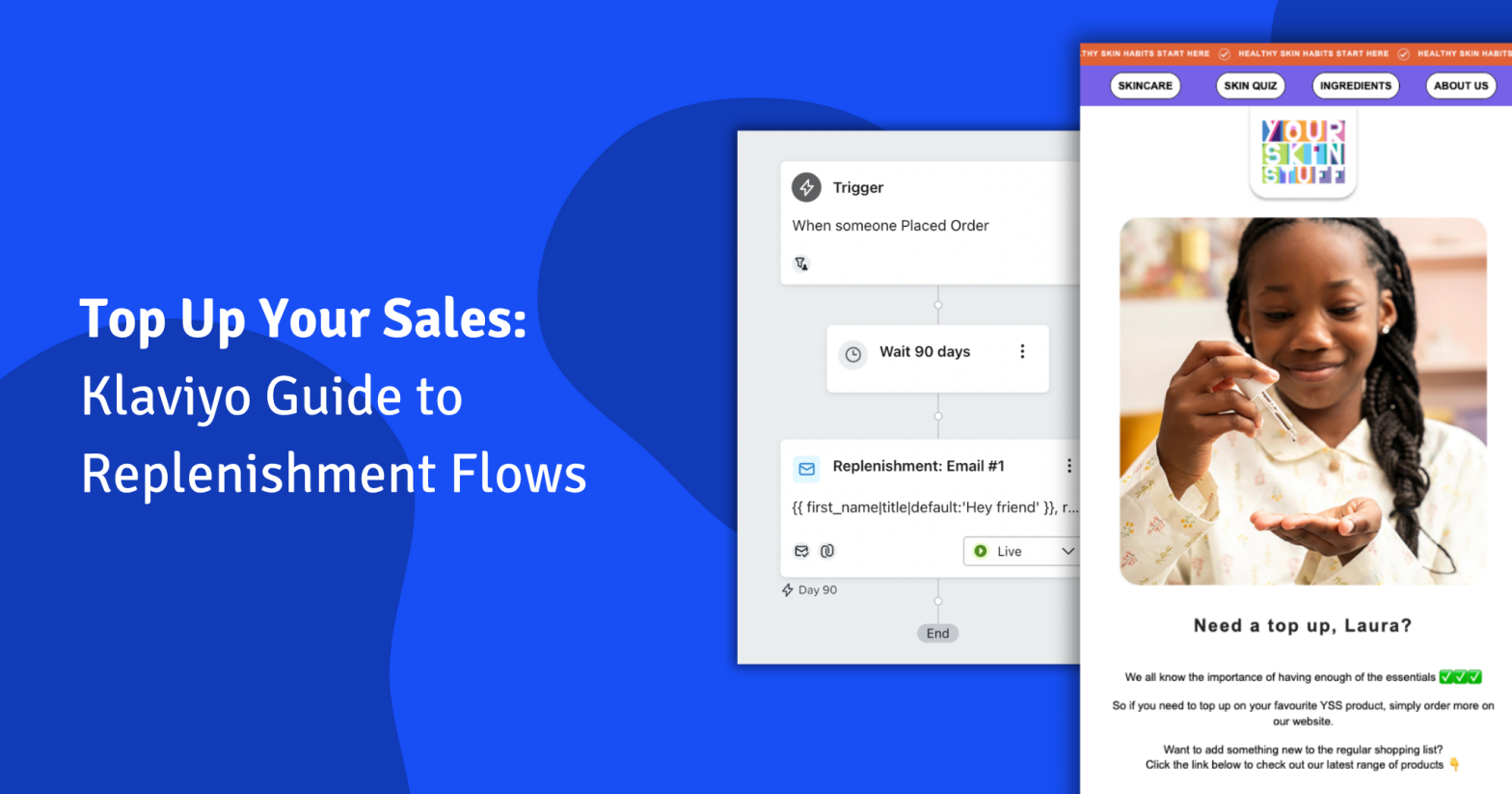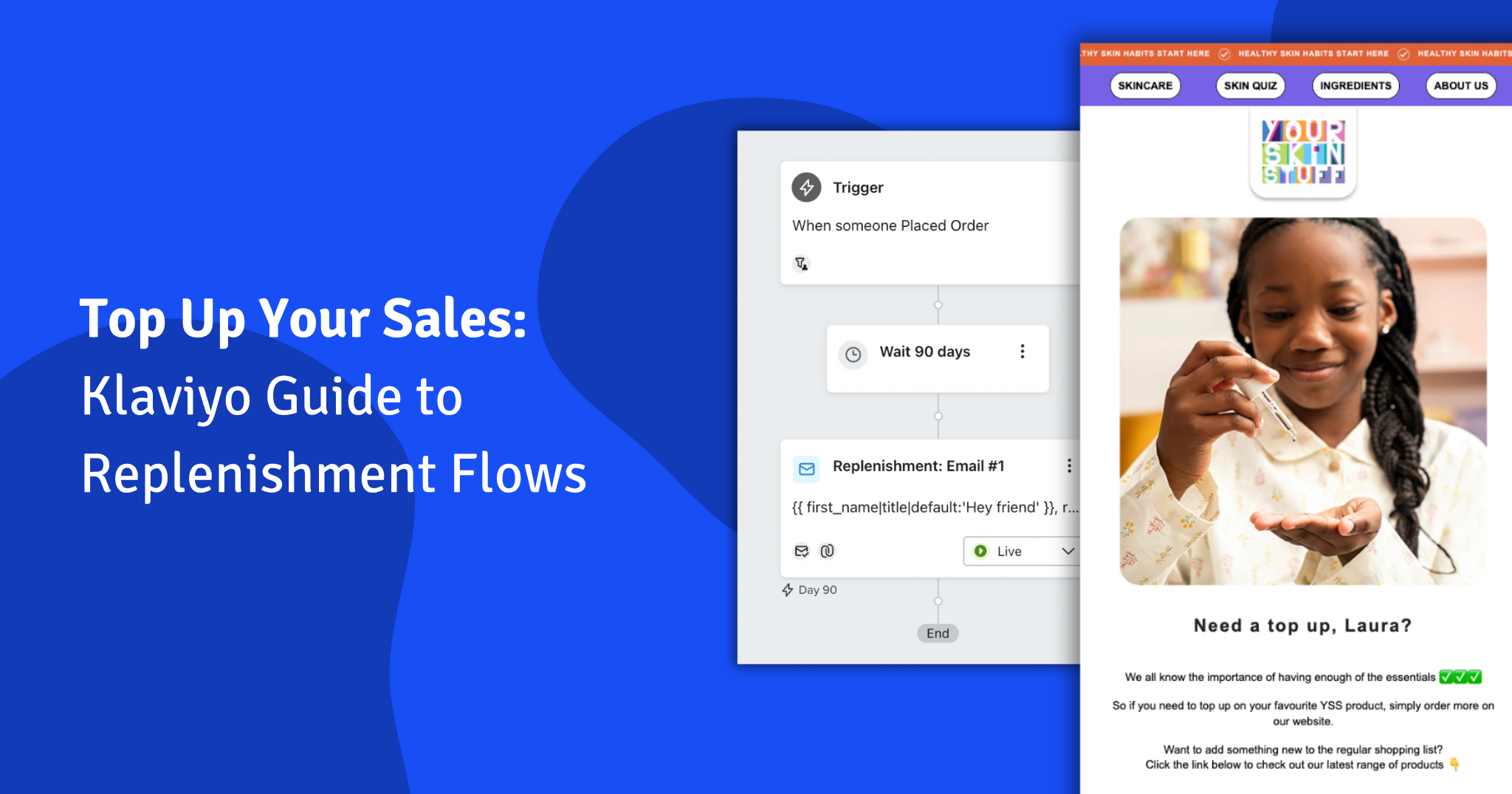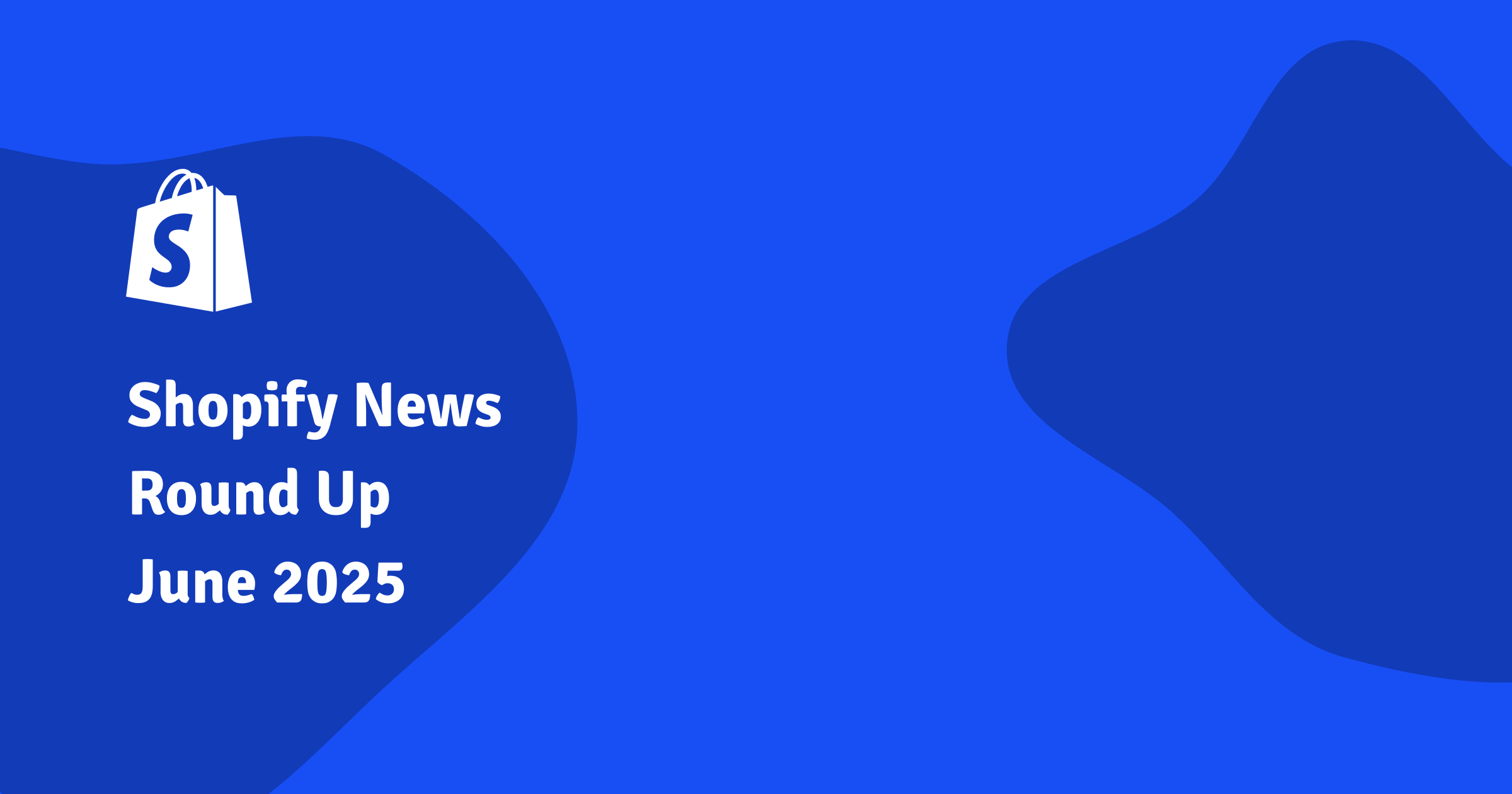When it comes to email marketing, timing is everything, and that’s why replenishment flows are among the most effective ways to keep customers coming back.
If you’re not familiar with the term, a replenishment flow is simply an email automation (which can be just one message or a series) to remind a repeat customer that they may want to top up or replenish a product they’ve likely used up.

So, does your business need a replenishment flow, and how do you set one up? In this article, we’ve covering everything you need to know about getting started and making the most of these flows, so let’s get into it.
Do I Need A Replenishment Email Flow?
Replenishment flows work best for businesses selling consumable products – think skincare, vitamins, food and drink, beauty and haircare, pet food, cleaning products etc. These are customers that are most likely going to need your product again after a set length of time (think a 30-day multi-vitamin, or seasoning mix roughly 20 servings).
And those repeat customers? They’re nothing short of invaluable for your business.
In fact, Klaviyo goes as far to describe statistics around repeat purchases as “jaw-dropping”.
According to the email marketing giant (and our personal favourite), “the average ecommerce store earns 41% of their total revenue stream from only 8% of their customers“.

Not only that, but “repeat customers spend three times as much as first-time customers.
Those are some pretty good reasons as to why your business might use a replenishment flow – but they’re not the only ones. A well-designed, well-timed replenishment flow has other benefits, like:
- Reducing friction: No one likes running out unexpectedly, and a helpful reminder makes reordering easy.
- Building loyalty: You’re showing customers you understand their routine, and you want to make things simpler for them.
- Competing with subscriptions: If you don’t offer a subscription model, replenishment emails provide a similar level of convenience.
Ultimately, these flows are about meeting customers where they are – and making it easy for them to choose you again.
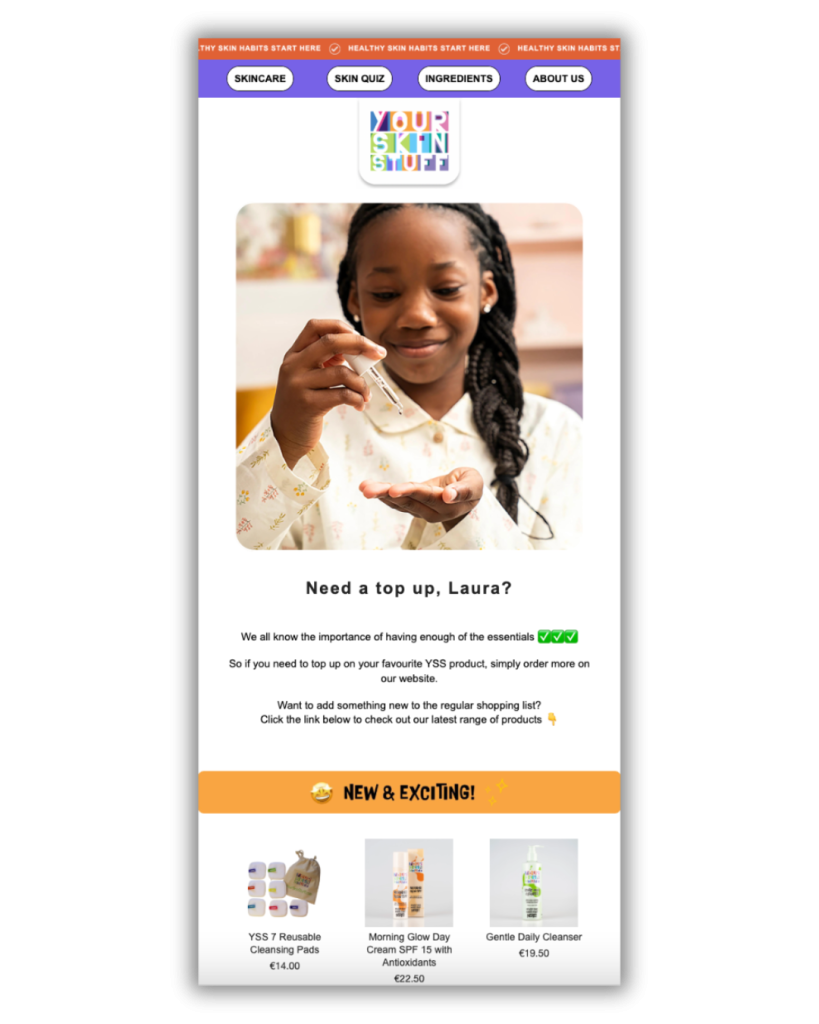
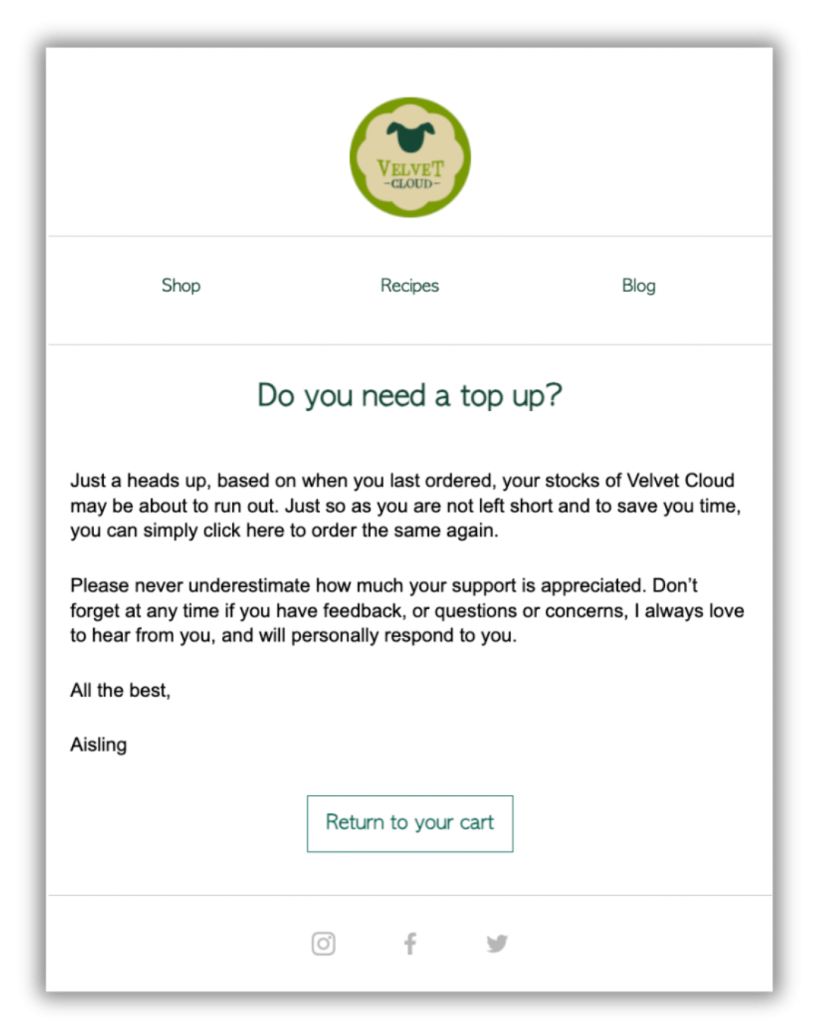
How to Set Up a Replenishment Flow in Klaviyo
Klaviyo makes setting up replenishment flows extremely straightforward.
Here’s our typical approach:
- Identify your replenishable products.
Tag or segment items people buy repeatedly – whether it’s personal care products, cleaning supplies, supplements, pet food, or even industrial consumables. - Estimate average time to re-order.
Use your sales data to determine how long customers typically take to repurchase. For example, 30–45 days will work for many personal care products, and 14–30 days for consumables or supplements. - Create a Post-Purchase Flow.
In Klaviyo, set up a flow triggered by purchase of one of these products. - Add a Time Delay.
Insert a delay that matches your repurchase window. For example, if customers typically reorder in 30 days, you might set the delay for 25–28 days to catch them just before they run out. - Design Your Email.
Personalise your email with the name and, if possible, the product they’ve purchased before, and remind them that they may be running low (choosing urgent messaging can be more effective). Also, be sure to include a clear call-to-action and helpful buttons to return them to the website. - Optional: Add Split Paths.
Tailor your messaging for first-time versus repeat buyers. You might offer incentives or highlight different benefits for those who are long-term shoppers or relatively new to your brand. - Test and Optimise.
It’s always important to monitor performance, and then adjust timing, content, and subject lines based on your results. This should flag any technical issues and help you finesse your messaging.

Best Practices for Replenishment Flows
While replenishment emails can deliver excellent results, they need to be done well. Customers are smart, and you should respect their time and attention by sending them messages worth both.
Here are our top tips for a good replenishment flow:
- Don’t overdo it
One well-timed reminder is usually enough – two if you’re being cautious. Anymore and you’ll be considered annoying, pushy, and spammy. - Use a friendly, helpful tone
Think of it as a polite reminder and not a hard sell. - Add a sense of timeliness
Copy like “You’re about to run out! ⏰” or “🔔 Running low? Top up now” can encourage a prompt purchase. - Good imagery
Use clear, appealing photos of the product where possible. - Personalisation
Where possible, use your customer’s name and reference exactly what they purchased. It’s even better if you can remind them why they loved it. - Optional incentives
If your margin allows, consider offering free shipping or a small discount to make reordering irresistible. - Clear CTA
Don’t make customers work to find their product or your website – include a clearly visible button with a CTA like “shop our website now” or “buy again”.
Ultimately, think about what you would want in a reminder email. Keep it practical, relevant, and respectful.
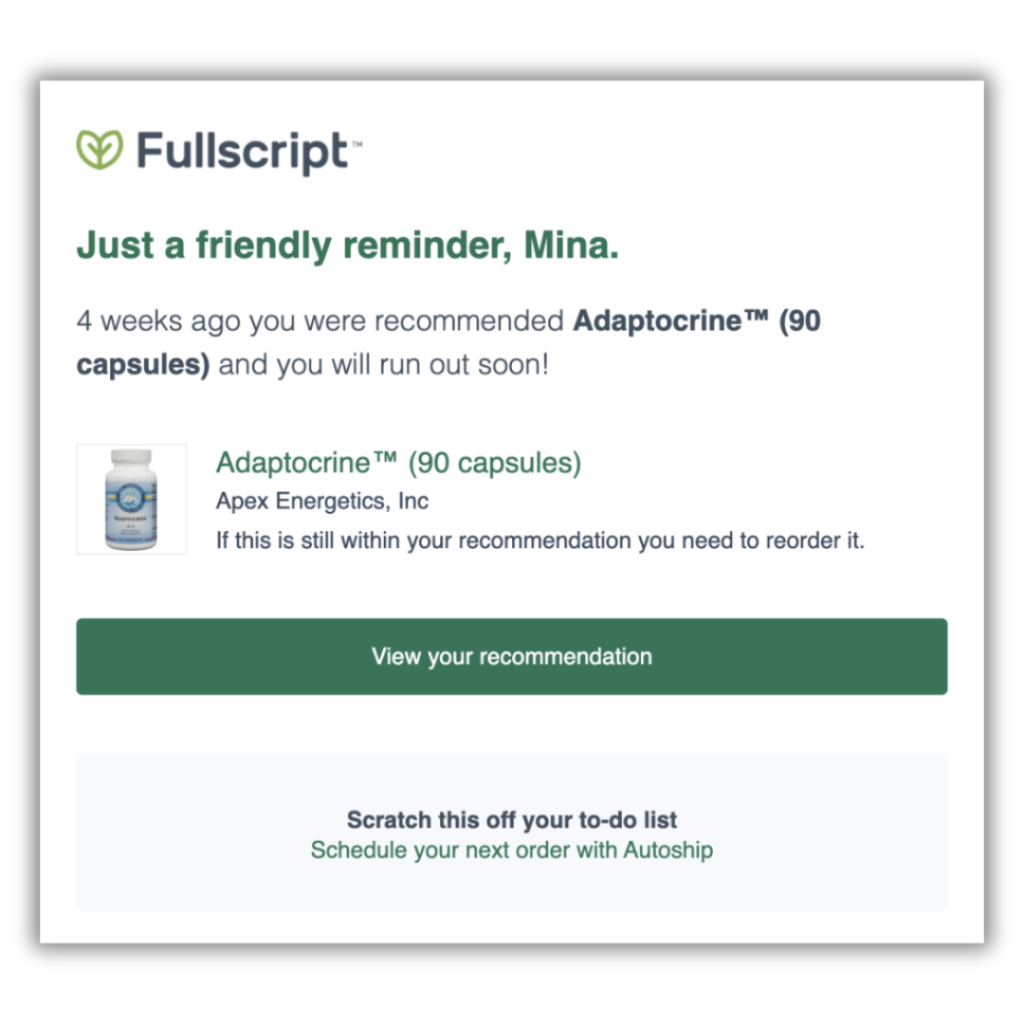
TL;DR
- Replenishment emails remind customers to restock products they use up regularly.
- Great for any repeat-purchase category: personal care, household items, pet supplies, supplements, etc.
- Klaviyo makes it easy to set up with post-purchase triggers and timed delays.
- Best practices: send just one or two friendly, well-designed reminders with personalisation and clear CTAs.
- It’s one of the simplest ways to increase loyalty, repeat purchases, and lifetime value.
Final thoughts
By helping people avoid the inconvenience of running out, you’re providing genuine value and making their experience with your brand more seamless. Whether you sell personal care products, household essentials, supplements, pet supplies, or anything else people buy again and again, it pays to make reordering as easy as possible.
If you’d like to set up effective replenishment flows (or any other email automation) but aren’t sure where to start, get in touch. We’re Klaviyo partners and can help you build campaigns that work without the headache.
Want to avoid missing expert Klaviyo advice and tips in future? Sign up to our newsletter – Shopify Insider – today to get content like this sent straight to your inbox.
